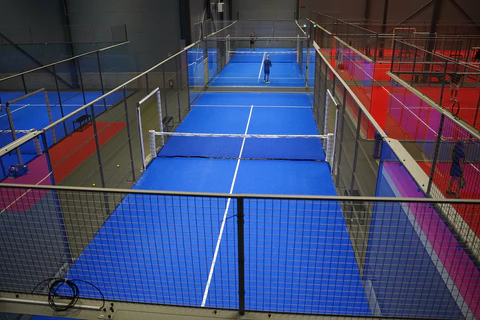

Building a Padel Court in China A Growing Trend
Padel, a popular racquet sport that combines elements of tennis and squash, has been rapidly gaining traction around the world, and China is no exception. The sport’s unique appeal lies in its accessibility, social aspects, and the relatively small space required for courts compared to traditional tennis. As more Chinese cities embrace this dynamic sport, building a padel court presents a promising opportunity for developers, investors, and sports enthusiasts alike.
The Rise of Padel in China
Over the past few years, padel has surged in popularity across various regions, primarily due to its fast-paced nature and the minimal skill barrier for beginners. Unlike traditional tennis, padel is played on a smaller court and allows the use of walls, making it easier for players to enjoy a competitive game without extensive training. Moreover, its social character encourages groups of friends and families to participate together, enhancing its appeal in a culture that values social interaction in sports.
Chinese cities such as Beijing, Shanghai, and Shenzhen have seen the emergence of padel clubs and facilities. The rise in interest is reflected in the increasing number of tournaments, partnerships with international padel associations, and grassroots initiatives aimed at promoting the sport among younger generations. This creates a favorable environment for building padel courts, which can serve both recreational and competitive purposes.
Planning and Design of Padel Courts
When considering the construction of a padel court in China, there are several key factors to keep in mind. Firstly, optimal location is crucial. Selecting areas with high foot traffic, such as urban centers, parks, or sports complexes, will attract more players. Additionally, proximity to public transportation can enhance accessibility for players.

The design and construction of a padel court also require careful planning. A standard padel court measures 20 meters by 10 meters and features walls made of glass and/or solid materials. The construction should comply with international standards to ensure that the court is suitable for competitive play. Furthermore, incorporating amenities such as seating areas, locker rooms, and a pro shop can enhance the overall experience for players and spectators.
Sustainability and Community Engagement
In the context of rapid urbanization in China, it is essential to consider sustainable practices when building a padel court. Using eco-friendly materials, implementing energy-efficient lighting, and integrating green spaces around the court can contribute to a more sustainable development approach. Additionally, such practices can resonate well with the environmentally-conscious younger generation, further increasing the court’s appeal.
Engaging the local community is also vital for the success of a padel court. Hosting workshops, free introductory sessions, and local tournaments can create a sense of belonging and excitement around the sport. Collaborating with schools, universities, and local organizations can help foster a community of players who are passionate about padel, paving the way for its growth in the country.
Conclusion
The construction of a padel court in China represents an exciting opportunity at the intersection of sport, community engagement, and sustainable development. As padel continues to gain popularity, establishing quality facilities will not only meet the demand for this dynamic sport but also contribute to healthier lifestyles and stronger communities. With the right planning and community focus, padel can thrive across China, enriching the sporting landscape and inviting players of all ages to join in the fun.
Premium PVC & Rubber Sports Flooring Shock Absorption, Slip Resistance
Durable Rubber Floor Mats Slip-Resistant & Easy Clean Design
Premium Rubber Floor Mats Slip-Resistant, Durable & Easy-Clean
Rubber Bricks & Flooring Durable, Slip-Resistant Eco-Friendly Solutions
Homogeneous Transparent Rubber Flooring - Durable & Slip-Resistant
Durable PVC & Rubber Sports Flooring Slip-Resistant & High-Performance